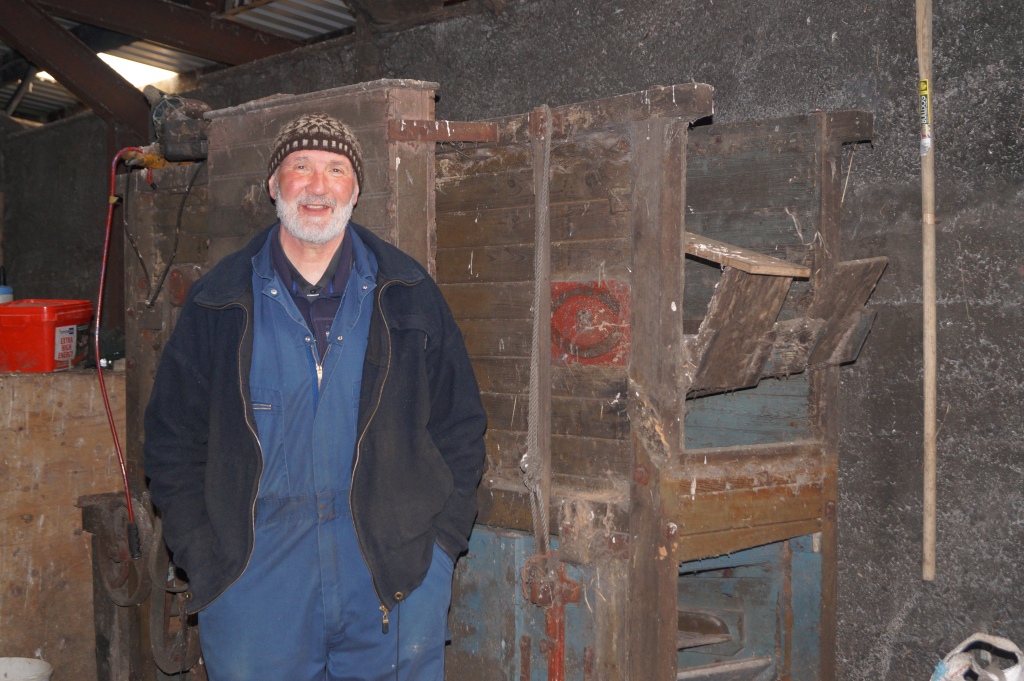One could ask what a cow has had to do with my life with wool, from my work place point of view Shetland sheep has been the most valuable animal on the croft however I feel it is very important to acknowledge the vital role the cow played in crofting life.
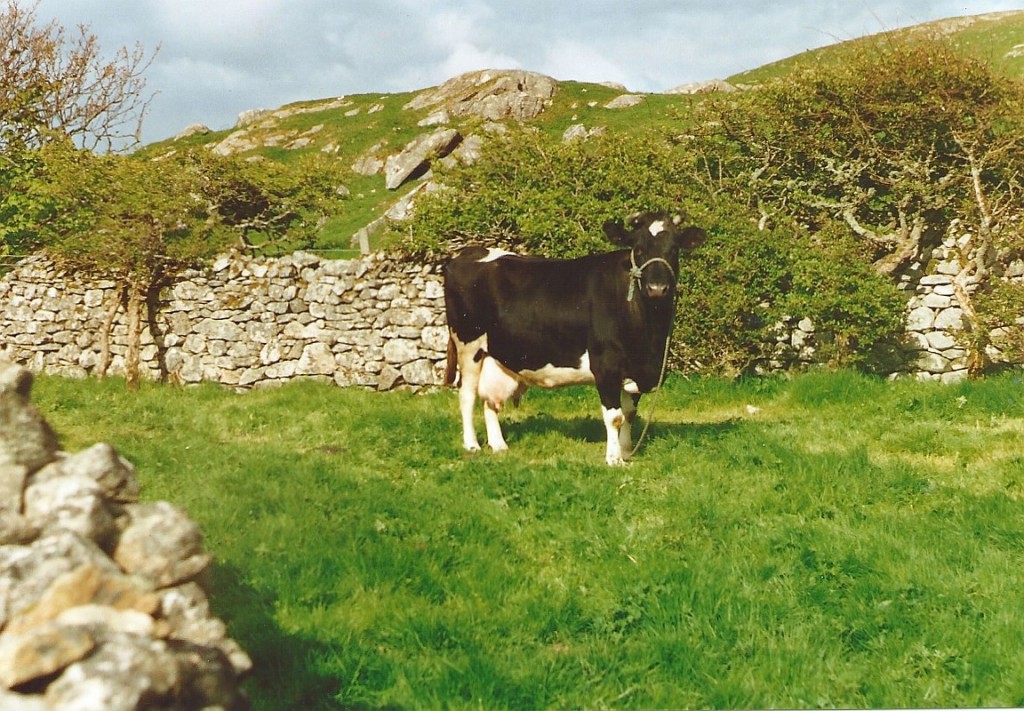
In an earlier blog I mention my time as a student at McRobert’s Farms Douneside Tarland Aberdeenshire and in particular working with a byre full of Friesian cows a shock to the system taking into account the only cow in the north of my former home Burra Isle in the 1950s/60s belonged to two crofting sisters whose croft overlooked the picturesque Meal sands. It was on my childhood holidays in the early 1960s in Vidlin that I first experienced the worth of the family cow and how it provided for the crofting family and had been an integral part of crofting life especially in past times when food was scarce and the men of the family away at sea.
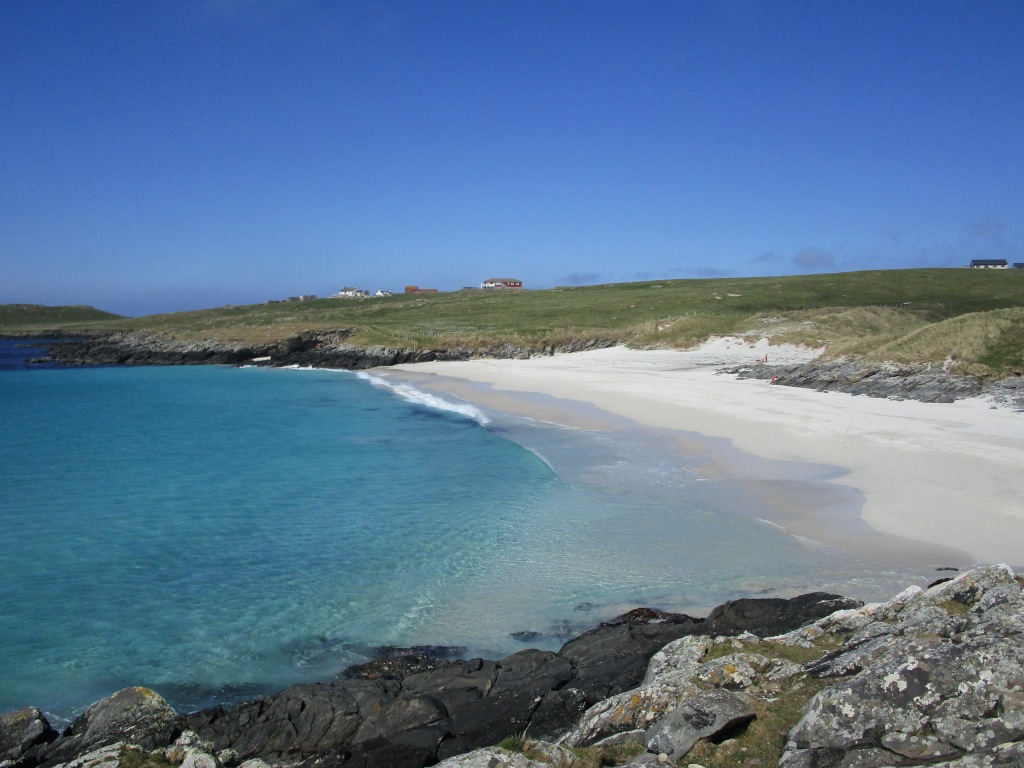
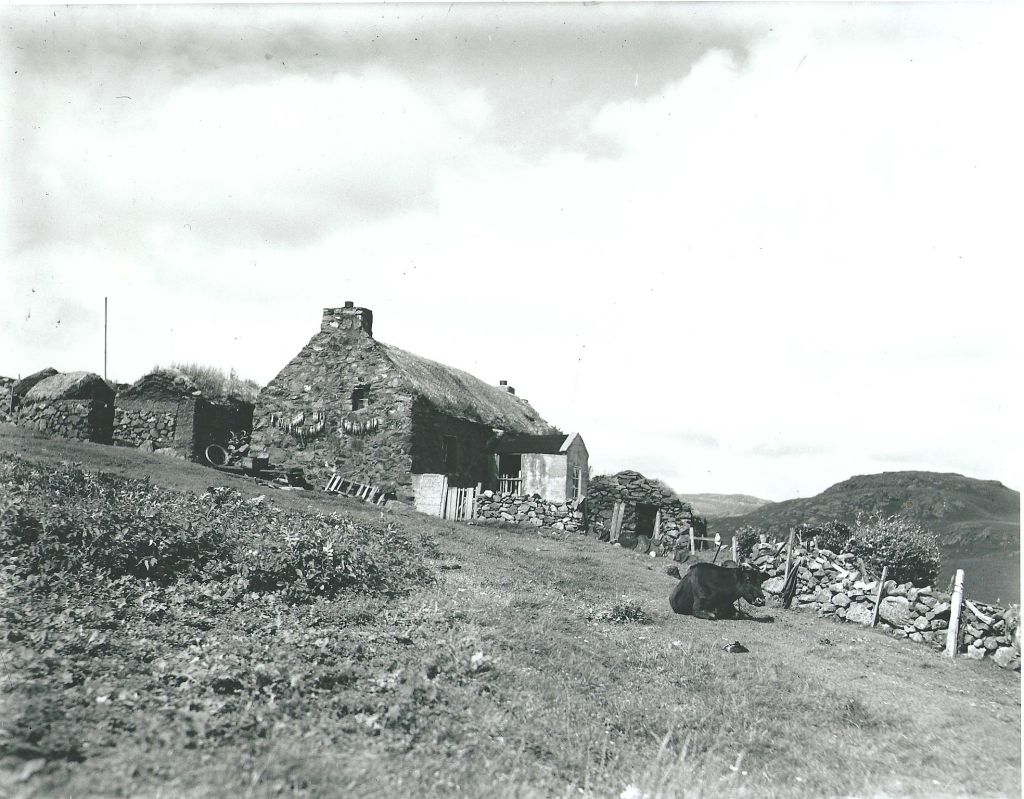
I was 9 years old when I first went to Vidlin in the north east of Shetland for my holidays I was told my first time away from home I was very homesick little wonder coming from a small island to what looked to me at that time a vast panorama of moors and hills. I enjoyed the croft work especially working with the family milking cow I cannot remember if it was a Shetland only that it was black and white and on my first attempt at milking her she had a very fierce kick and sent the bucket flying through the air. I remember in the summer months tethering the cow by its “ baand “ a rope with a sharpened stake which was driven into the ground securing it while the cow grazed on the new grass.
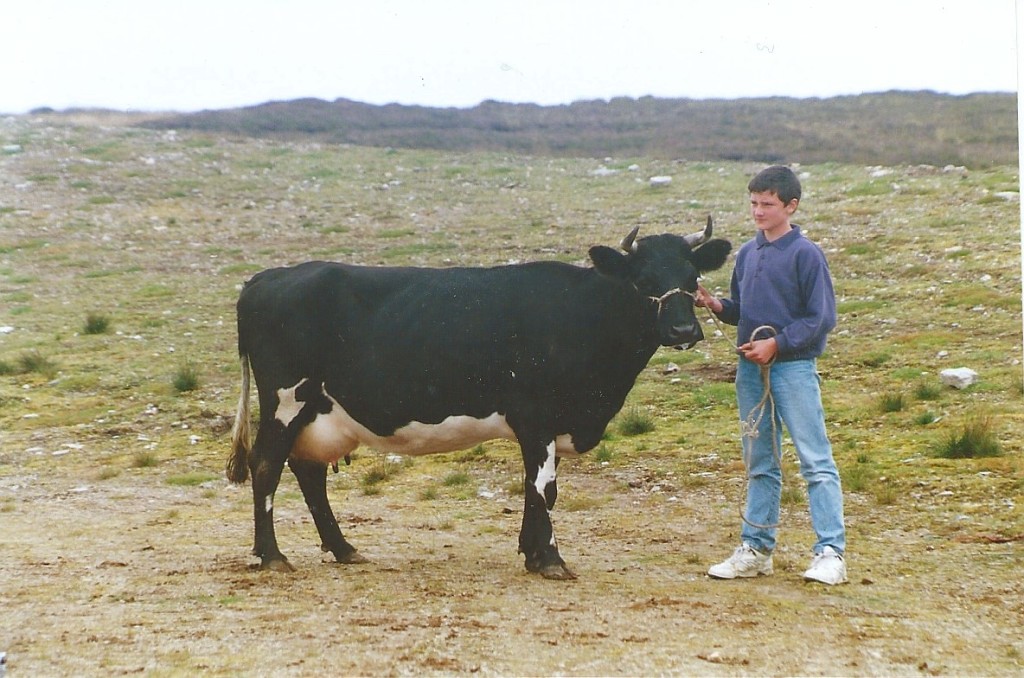
The cow was milked in the morning and at night and when it calved then it was three times a day not only did it provide fresh milk also several valuable by products which was an essential part of sustenance for the crofting family which often struggled to put food on the table. I have vivid memories of how most of these food stuffs were created not because of my culinary skills it was the fact on trying to learn the art of ‘ kirnin’ the milk that is churning in a round wooden churn I managed to capsize the kirn, ( churn) all over the kitchen floor thus loosing valuable surplus milk which had been stored in containers and left to ‘run’ (curdle) and make ‘kirn-mylk curds as well as butter, butter milk which was kept for baking or as a drink, ‘ blaand’ was sour milk which was kept as a drink. This experience of the Kirkabister croft cow was to hold me in good stead when I was confronted by a byre full of Friesian cows at least I knew how to milk by hand and all about sour milk.

The cow was possibly the most prized possession on the croft considering its worth in providing much needed nourishment its “muck” or dung was captured in the “runnick” an open drain which usually ran from the byre to the midden or dung heap. The cow dung combined with the bedding usually straw made an ideal compost type material which was eventually spread on the fields as an excellent fertiliser. I found the clearing of the “ runnick” to be a quite messy and hard work removing it by wheel barrow out to the midden. One cow was bad enough it was nothing compared to the thirty five I had to clean up after on my side of the byre when I worked on the Douneside dairy farm. There was no such labour intensive work involved at Berry farm the byre was fitted by a mechanical cleaner which deposited the manure straight into the storage trailer, typical invention of my old boss Jim o Berry.
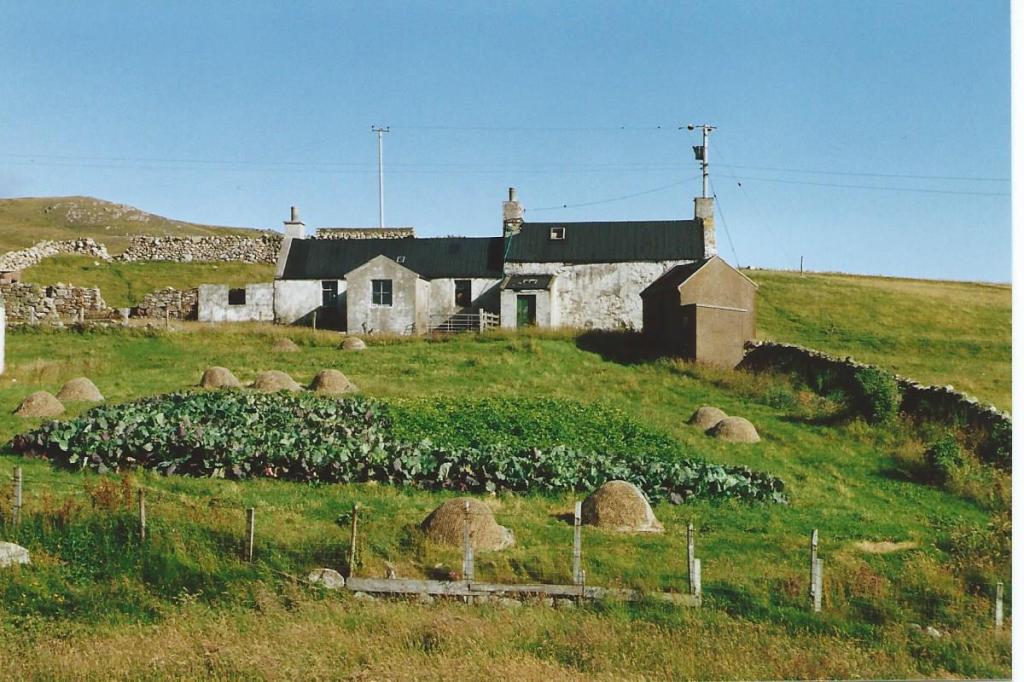
My first knowledge of pure bred Shetland cattle came about on a visit to the A.I. centre as a student at the North of Scotland College of Agriculture in 1966/7. We visited the Chapel Croft A.I. centre at Bucksburn not far from our base at Craibstone; we were given a tour by a veterinary surgeon Mr Semple. At that time there was 24 bulls at the centre four Friesians three Ayrshire the remainder made up of various beef breeds. In the laboratory Mr Semple explained about frozen sperm which could keep for years as an example he showed us a slide taken from a pure bred Shetland bull its origins was from the west side of Shetland.

I learned more about the Shetland breed from my employers the Smith family of Berry Farm who had a copy of the Shetland Cattle Herd Book Society which was formed in 1910. My old boss John ‘Sheepie’ Smith was amongst other things a cattle dealer hence his involvement with the herd book.
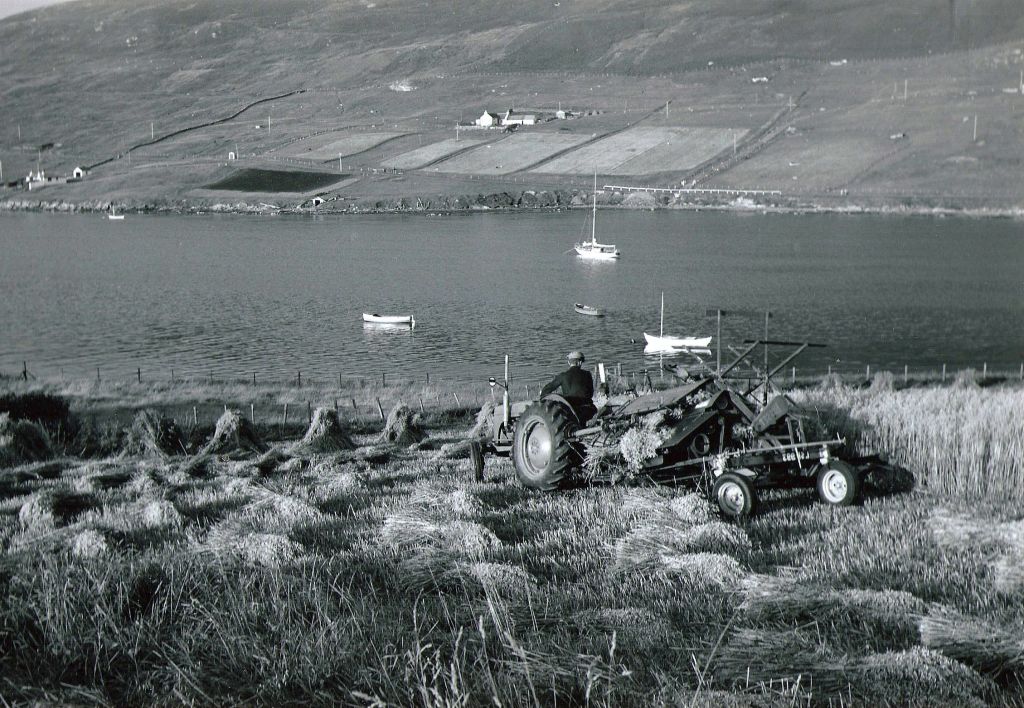

The origins of the Shetland cow appear to be very similar to that of the Shetland sheep in the distant past it supposedly had a connection to Scandinavian breeds and could have been brought over by the Vikings when they settled here in the 8th/9th century. They were a smaller animal as was the native Shetland sheep and able to survive on the natural Shetland pasture, in the winter months they were kept in a byre attached to the croft house. In fact on a lot of crofts in the distant past the byre was accessed through the dwelling house which provided much needed warmth from the body heat of the animals. A good example of this type of building we found at the derelict croft house remains of the South Hill / Hapwell at Sandsound. In the adjoining byre we found a flat stone, built into the wall of the building with a hole through it which the cow would have been tethered by a rope called a “ baand “, there was a large knot on the end so it couldn’t pull through. According to the Shetland dictionary this stake was called in our dialect a “ veggel “ and was normally made of hard wood the rope which tied the cow was called a “ veggel-baand “. In the 1960s I asked a former resident of Sandsound who remembered people working the croft if this was very securing the thatched roof, he told me no it was for fastening the “ Kye “, in the byre.


Keeping the cows inside in our fairly lengthy winters meant they required a great deal of fodder in times gone by hay, corn and root crops such as Kale was vital to help the animals survive. At Berry farm in the late 1960s we would thrash the corn and put it through the thrashing machine separating the stalks from the oats which we bruised and fed to the cattle, the straw was also used for feeding and bedding. In times past Shetland oats were grown and was vital to crofting life, the oats when dried were ground into flour and the straw was used to thatch roofs also in making carrying baskets ‘ kishies ‘ , and chairs as well as fodder.

